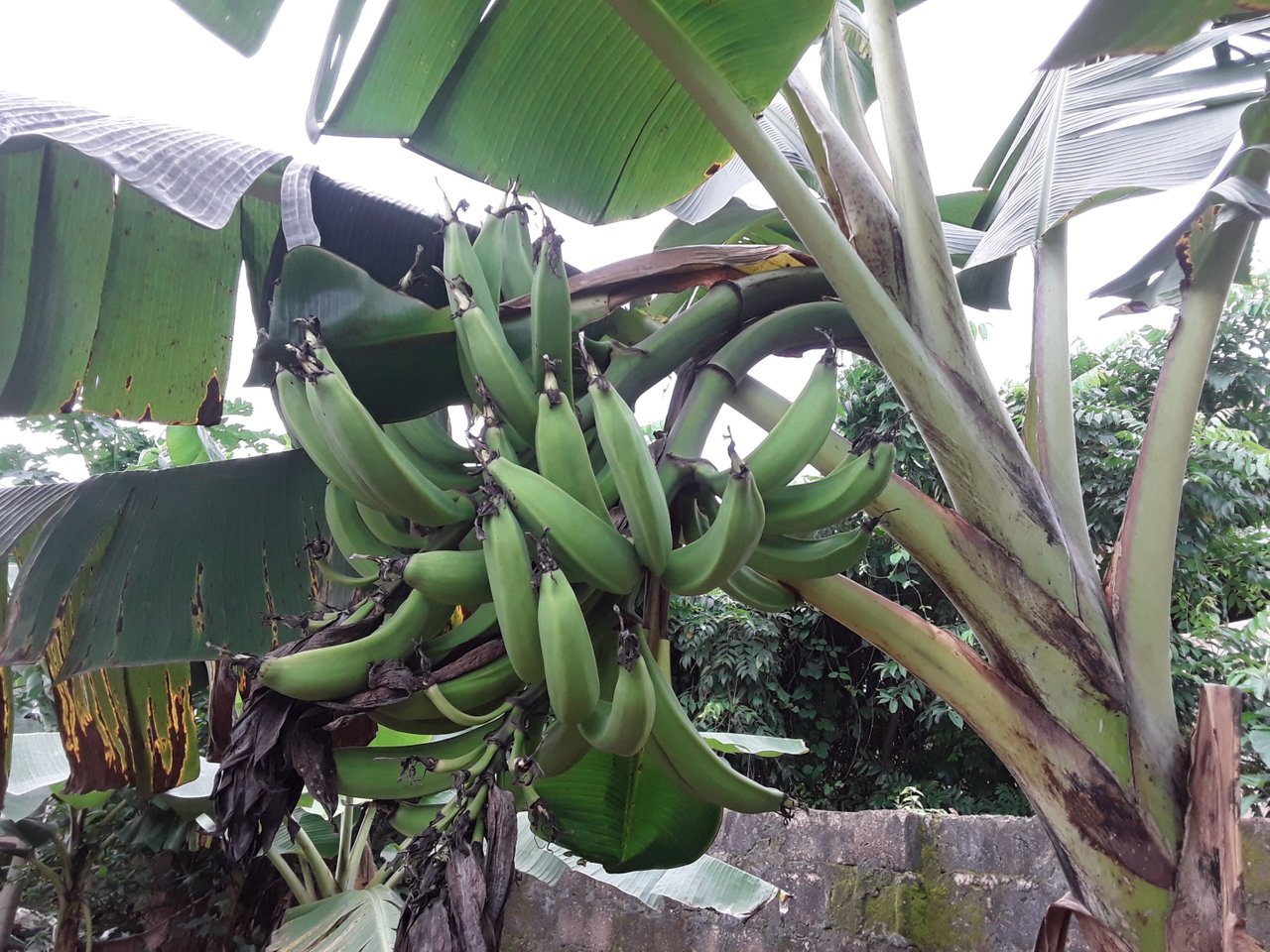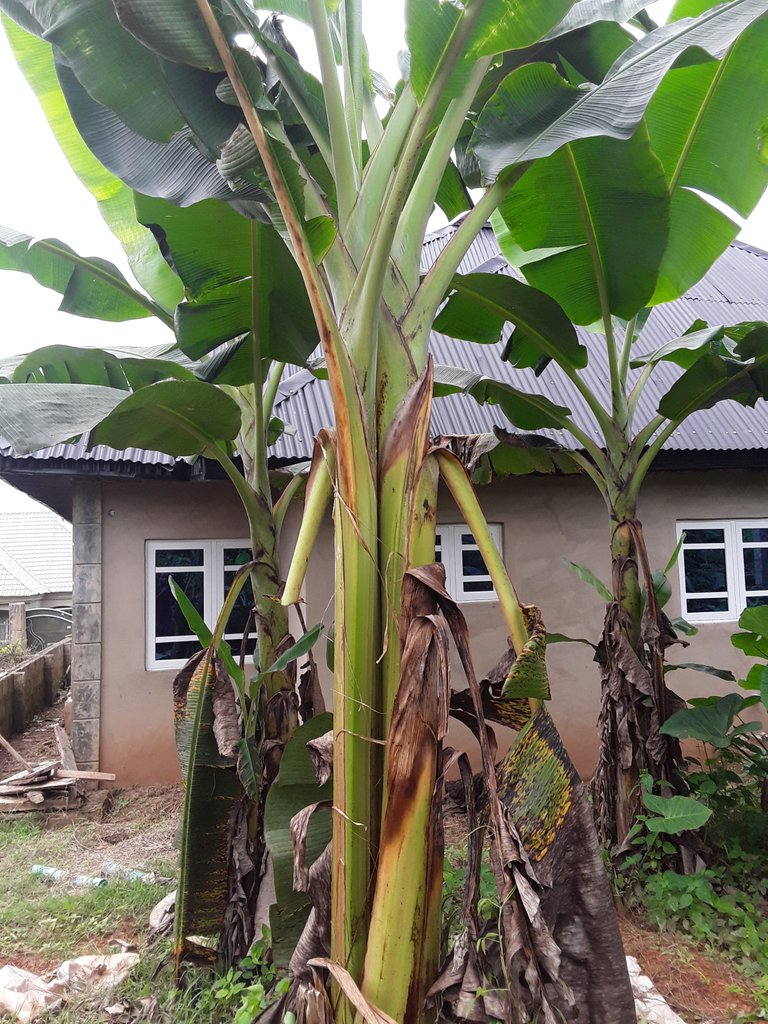Unraveling the mystery behind double bunch plantain
Double-bunch plantains are economically more desirable to farmers, no doubt. They are being paid double for a single job. This is one of the reasons I did not hesitate to remove a young sucker from a double bunch producing plantain and transplant it into my little garden last year.
Since plantain takes about a year to mature and produce fruits, I anxiously look forward to reaping double bunch fruits this year.
Long before now, I use to think of double bunch plantain as mono or dizygotic twins. In monozygotic twins, a single egg is fertilized by a single sperm. The fertilized egg then divides into two and each egg develops into a baby.

In contrast, dizygotic twins are formed from two eggs and two sperms. Each egg is fertilized by different sperms and the fertilized eggs develop into babies. This is why monozygotic twins are usually identical while dizygotic twins are not.
I was wrong. The process of fruit formation in plantain is entirely different. Both Male and female flowers are produced by plantain. The flowers are usually formed long before they become visible to the onlooker. The Male flower bears the pollen while the female flower bears the egg. After fertilization, the female flower becomes the plantain fruit while the male flower degenerates.
The plantain stem in itself is not a real stem. It is formed from a number of leaves that overlap one another to give the trunk a false stem appearance. Within these wrapped leaves lies the bud itself - the apical bud.
In other words, plantain leaves form a pseudo stem enclosing the apical bud. The single apical bud grows and produces the flowers that eventually give us the fruits we see all around. So, looking at it technically, there is no way a double bunch of fruits can be formed from a single apical bud.
What really happens in the case of the double bunch fruit is that the apical bud divides into 2 at some points before the onset of flowering. This division has been found to be due to the mutation of a particular gene within the genome of the plantain plant. This mutation led to speciation.
So, the two apical buds continue to grow within the same pseudo stem. Each bud produces flowers and fruits normally like independent plants. The division of the apical bud into 2 does not always end well, however. I got to know this recently from a personal experience.

When I started planting young plantain suckers into my small garden last year, I deliberately went for the double bunch-producing suckers. I was expecting the suckers to reach maturity this year as it takes about a year for plantain to grow, reach maturity, and produce fruits.
Just when I thought the plantain will start producing flowers, what I saw was initially confusing. The single stem suddenly became two at the top of the trunk. I could not link this observation to the double bunch-producing ability initially until a few weeks after.
The other suckers I planted that are not double bunch producing have started producing flowers. And then, the entire stem of one of the double bunch-producing plants divides to reveal two pseudo stems. It appears that each apical bud started producing its own leaves.

Unfortunately, the two pseudo stems started showing signs of distress. Either the competition for resources is taking its toll on them or this is due to a pathogenic disease, I would not know. However, I suspect the former.
Why did the two apical buds become 2 pseudo stems? This is the first time I will be witnessing this in a double bunch producing plantain. The mother plant I got the suckers from has already started producing fruits. While several hypotheses can be generated from this observation, it will take properly organized experiments to test them.
If anyone is interested in the double bunch plantain sucker, I am open to sending it across for free. However, the shipping cost will be on you.
What do you think?
I've never seen anything like this in my area. I want that banana tree
Interesting experiment (please allow me to call what you did that way).
I agree with your conclusions about the demand on resources that may be too important relative to what your soil can produce. Isn't it easy to fix with supplements to be added to the soil?
Thanks for this offer of sending seeds away. I am however not interested. I don't think banana trees will live well in the region where I stay.
Thanks for your contribution to the STEMsocial community. Feel free to join us on discord to get to know the rest of us!
Please consider delegating to the @stemsocial account (85% of the curation rewards are returned).
You may also include @stemsocial as a beneficiary of the rewards of this post to get a stronger support.
I would love a truckload of double bunched plantain suckers but our draconian laws about importing plant material would send me to jail! 🤕
Same, strict import/export and quarantine guidelines for planting materials, even raw fruits and vegetables. My grandma had to leave her bananas in port because laws prohibited it. Maybe it's because of viruses and other infectious diseases that might cause billions of dollars in damages.
Banana is a most healthy and my favorite fruit and curry